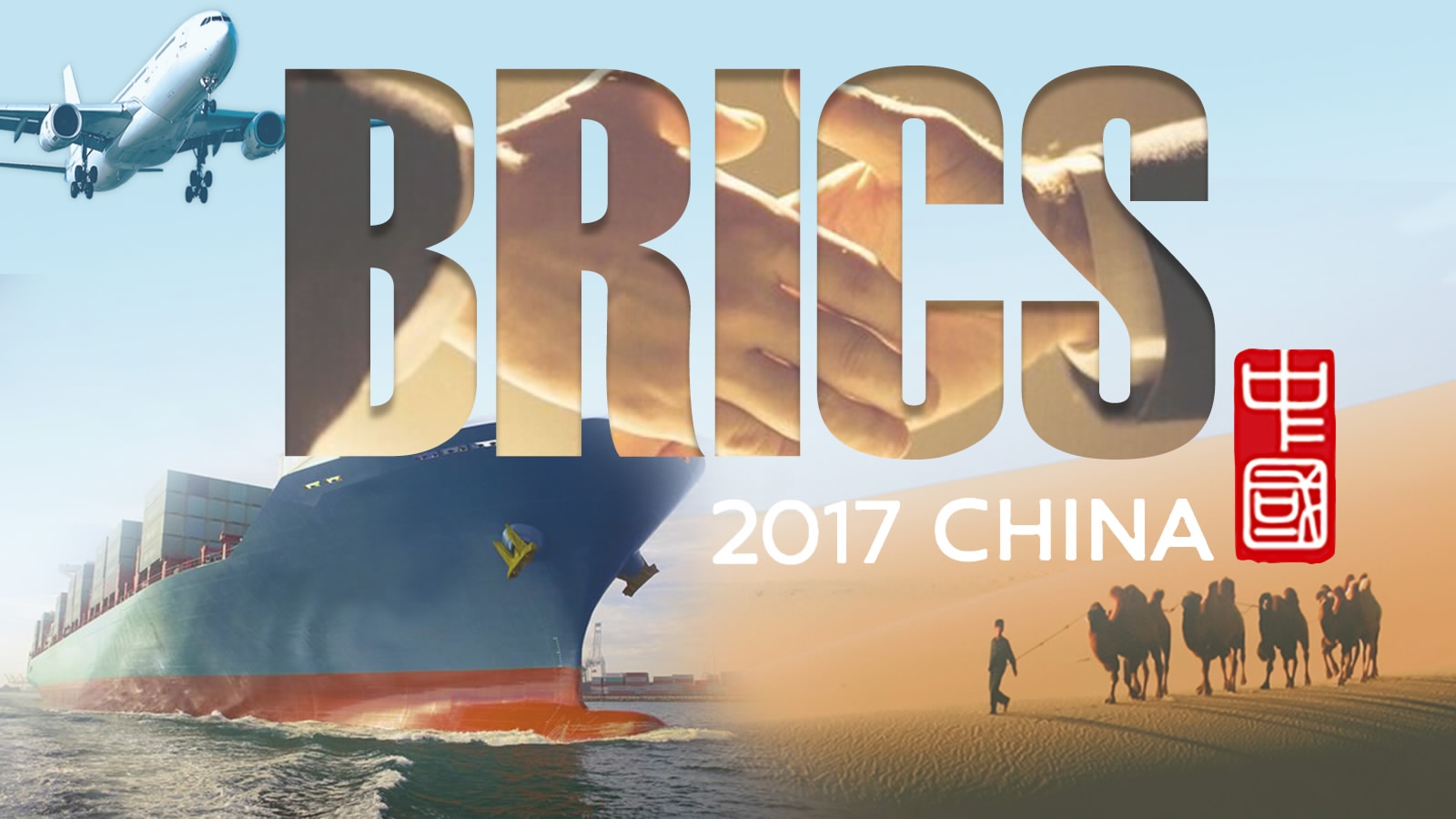BRICS nations are emerging powers: The economic aggregate of the member countries accounts for 23 percent of the world economy, up from 12 percent 10 years ago, contributing more than 50 percent to total global economic growth.
The combined volume of trade and overseas investments by the BRICS takes up 16 percent and 12 percent of the world totals, up from 11 and 7 percent respectively in 2006.
Although the progress of Brazil, Russia, India, China and South Africa is clear, questions over the value of the BRICS mechanism have lingered. After Beijing successfully held the Belt and Road Forum for International Cooperation in May, some suggested it may be time for BRICS to “retire.”
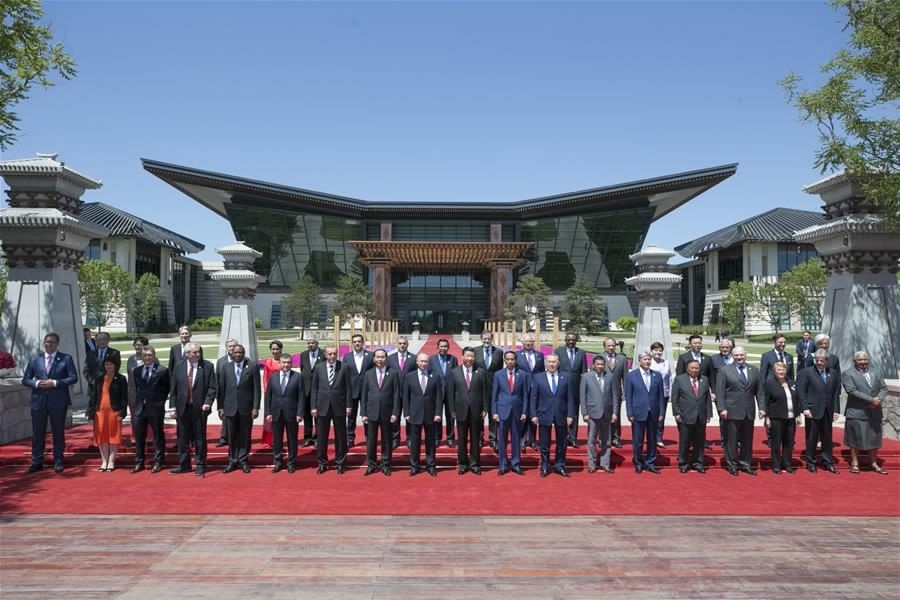
Chinese President Xi Jinping, foreign delegation heads and guests pose for a group photo at the Leaders' Roundtable Summit of the Belt and Road Forum for International Cooperation at Yanqi Lake International Convention Center in Beijing on May 15, 2017. /Xinhua Photo
Chinese President Xi Jinping, foreign delegation heads and guests pose for a group photo at the Leaders' Roundtable Summit of the Belt and Road Forum for International Cooperation at Yanqi Lake International Convention Center in Beijing on May 15, 2017. /Xinhua Photo
However, while the two mechanisms overlap, they can also complement one another to achieve win-win development and promote a new type of global governance.
Overlapping aims
Leaders of the five BRICS countries will gather in Xiamen on September 3-5 under the theme "BRICS: Stronger Partnership for a Brighter Future"; they are expected to pursue mutual benefits by strengthening solidarity and collaboration and improving global governance.
Upholding the principle of "extensive consultation, joint contribution and shared benefits," China, in pursuing the Belt and Road Initiative hopes to achieve "a new model of win-win cooperation" President Xi Jinping outlined during his keynote speech at the Belt and Road Forum in May.
Promoting improved global governance has been repeatedly stressed by BRICS members, as emerging economies seek new ways to counter global challenges like security risks, Black Swan events, and anti-globalization trends.
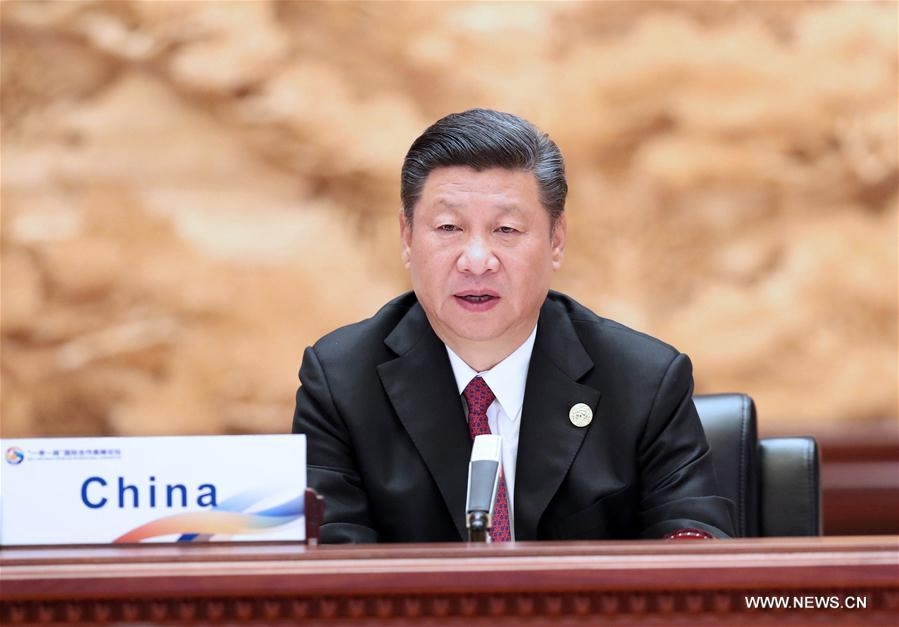
Chinese President Xi Jinping chairs the Leaders' Roundtable Summit at the Belt and Road Forum (BRF) for International Cooperation at Yanqi Lake International Convention Center in Beijing, China, May 15, 2017. /Xinhua Photo
Chinese President Xi Jinping chairs the Leaders' Roundtable Summit at the Belt and Road Forum (BRF) for International Cooperation at Yanqi Lake International Convention Center in Beijing, China, May 15, 2017. /Xinhua Photo
"Deficit in peace, development and governance poses a daunting challenge to mankind," Xi said in May, adding that with the Belt and Road Initiative the country "will not resort to outdated geopolitical maneuvering."
The establishment of BRICS cooperation mechanism – a new type of global governance for emerging economies, is a clear example of breaking through the traditional geopolitical thinking to form international organizations and mechanisms.
Power of cooperation
BRICS has been hailed as an "accelerator" in the transformation of the global economic governance system, with the five member nations increasing their representation of developing countries in international financial organizations, for example the International Monetary Fund (IMF) and the World Bank, through the BRICS mechanism.
The Belt and Road Initiative is a "great example" of the kind of global undertaking that the BRICS nations can participate in, and benefit from, according to David Thomas, chief executive officer of Think Global, a Sydney-based consultancy firm.
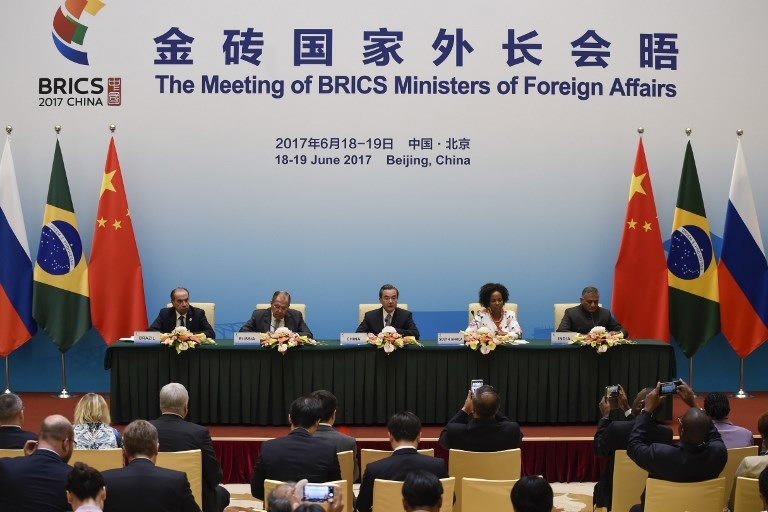
Brazil's Foreign Minister Aloysio Nunes (L), Russia's Foreign Minister Sergey Lavrov (2nd L), South Africa's Foreign Minister Maite Nkoana-Mashabane (2nd R), Indian Minister of External Affairs Vijay Kumar Singh (R) and China's Foreign Minister Wang Yi (C) attend a press conference during the BRICS Foreign Ministers meeting in Beijing on June 19, 2017. /AFP Photo
Brazil's Foreign Minister Aloysio Nunes (L), Russia's Foreign Minister Sergey Lavrov (2nd L), South Africa's Foreign Minister Maite Nkoana-Mashabane (2nd R), Indian Minister of External Affairs Vijay Kumar Singh (R) and China's Foreign Minister Wang Yi (C) attend a press conference during the BRICS Foreign Ministers meeting in Beijing on June 19, 2017. /AFP Photo
He added that the initiative could be a common bond shared by the member countries to encourage global progress and harmony.
In the past two years, except for China and India, the other three member states have struggled under economic downturns.
The “3T” trade agreements dominated by the USA -- the Trans-Pacific Partnership (TPP), Trade in Services Agreement (TISA), The Investment Integration Project (TIIP) -- all excluded the five BRICS countries. In this area, only “embracing” can ensure BRICS’s voice in international economic society is heard loudly.
Although BRICS has faced some difficulties in development, the embrace of five newly emerging countries – Egypt, Tajikistan, Mexico, Guinea, and Thailand – under the BRICS cooperation mechanism could add to the power of the BRICS agenda.
Banking on progress
The BRICS Bank, also known as New Development Bank, has swiftly established a firm base and achieved impressive results. According to K. V. Kamath, the first president of BRICS Bank, the institution approved seven loan projects from five BRICS countries in 2016 with a total loan size of 1.5 billion US dollars.
The bank is expected to approve 10 to 15 loan projects in 2017 with credit volume of 2.5 billion to 3 billion US dollars. The number of reserve projects for 2017 to 2018 has reached 23 and the loan size, 6 billion US dollars.
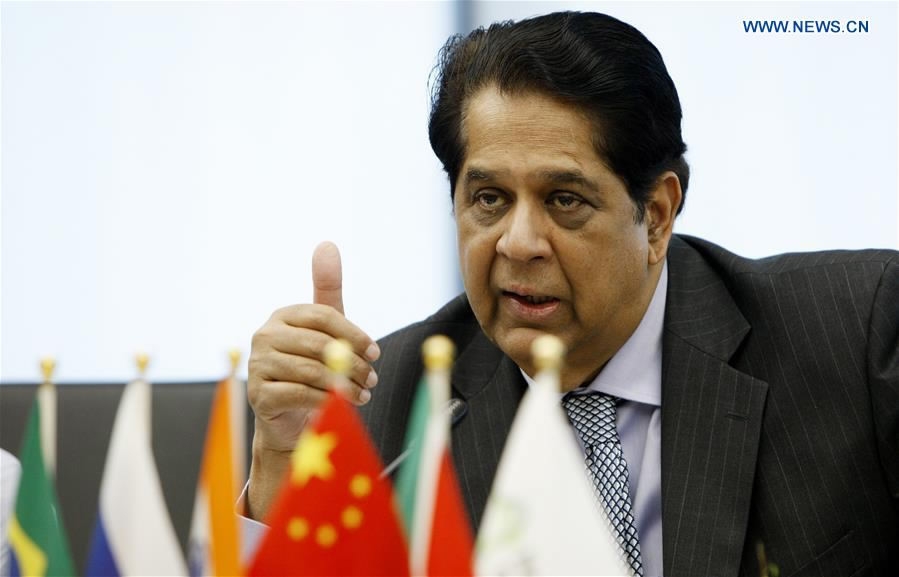
President of the BRICS New Development Bank K.V. Kamath answers questions during a press conference in Shanghai, east China, July 6, 2017. The BRICS New Development Bank has seen good results in the last two years and has a strong pipeline for the future, bank president K.V. Kamath said Thursday. /Xinhua Photo
President of the BRICS New Development Bank K.V. Kamath answers questions during a press conference in Shanghai, east China, July 6, 2017. The BRICS New Development Bank has seen good results in the last two years and has a strong pipeline for the future, bank president K.V. Kamath said Thursday. /Xinhua Photo
The BRICS Bank has also signed a Memorandum of Understanding with the Asian Infrastructure Investment Bank, the institution which supports many Belt and Road projects.
China's cooperation with BRICS countries in various fields and its ability to tackle differences set an exemplary role for Belt and Road Initiative, which connects 65 countries in Asia with Europe and Africa, along or beyond ancient land and sea silk routes.
A win-win game
The BRICS cooperation mechanism has smoothed cooperation channels between the member countries, and China’s partnerships with Russia, Brazil and South Africa under the Belt and Road Initiative framework has seen strong results.
Russia is a key country along the routes of the Belt and Road. China and Russia have agreed that the two sides will synergize their respective development strategies, the China-proposed Belt and Road Initiative and the Russia-led Eurasia Economic Union.
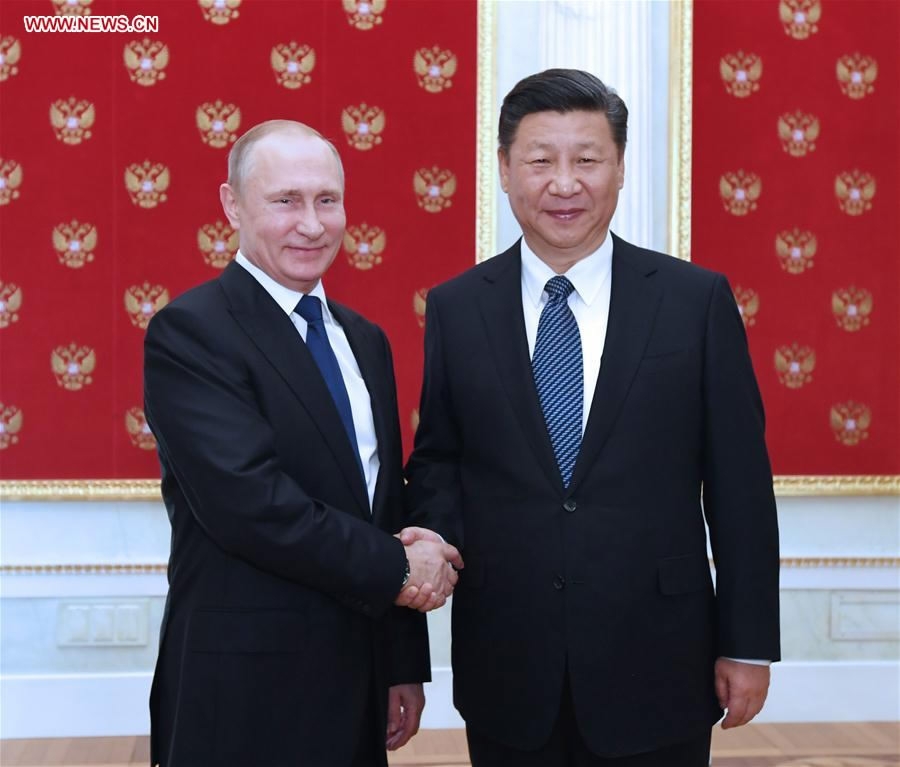
Chinese President Xi Jinping (R) meets with his Russian counterpart Vladimir Putin at the Kremlin in Moscow, capital of Russia, July 3, 2017. /Xinhua Photo
Chinese President Xi Jinping (R) meets with his Russian counterpart Vladimir Putin at the Kremlin in Moscow, capital of Russia, July 3, 2017. /Xinhua Photo
A deal including a 10-billion-US-dollar investment fund was signed by China and Russia in July for realizing cross-border infrastructure projects under the Belt and Road and the Eurasian Economic Union initiatives.
Brazil and South Africa have cooperated in the Belt and Road initiative by working with China on overseas infrastructures projects.
The Brazilian government has announced 50 billion US dollars in investment from China to intensify bilateral cooperation in infrastructure and other areas. Last year, Chinese companies invested 8.39 billion US dollars in Brazil, an increase of 13 percent year-on-year.
South Africa is China’s BRICS partner in Africa. The South Africa-China Local Government Dialogue was held on July 11 with the theme “Promote our Belt & Road through local cooperation.” The two sides emphasized that using the Belt and Road framework as a platform for local government cooperation would bring real benefits to the two peoples.
Alongside the Belt and Road Initiative, BRICS nations can improve infrastructure to attract more manufacturers and boost local service industry. The mechanisms may sometimes overlap, but can work in tandem to promote inclusivity and win-win partnership.

